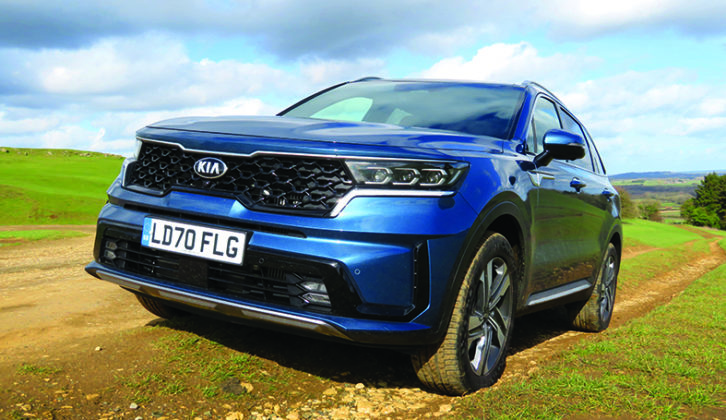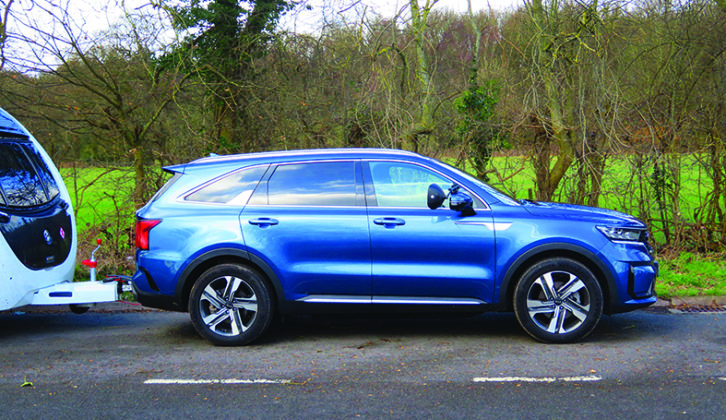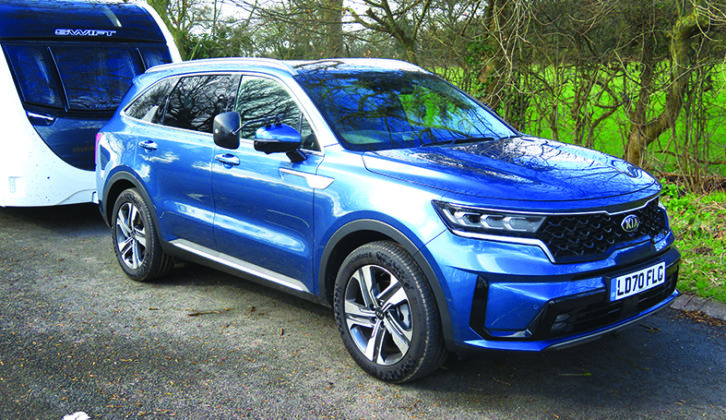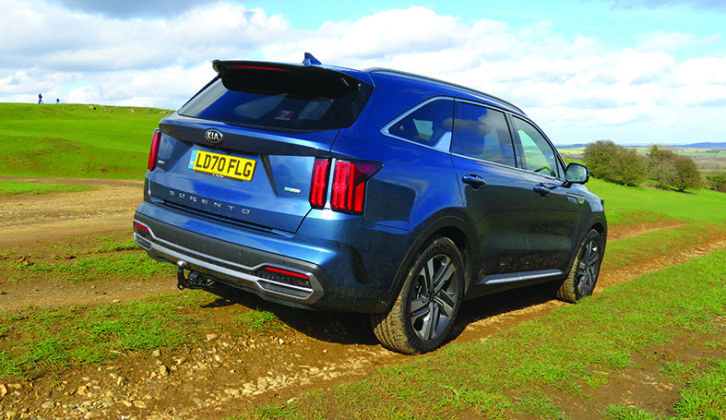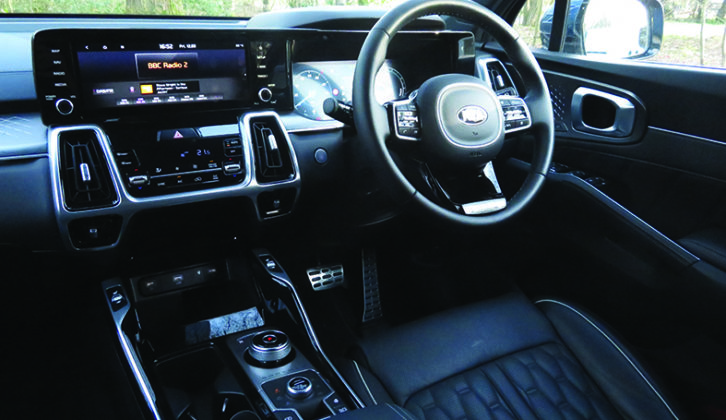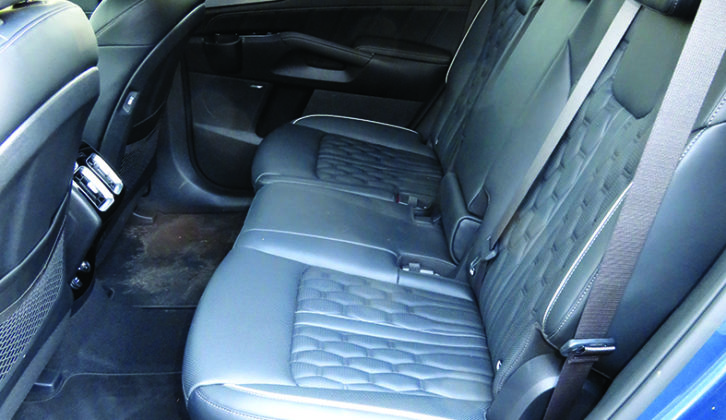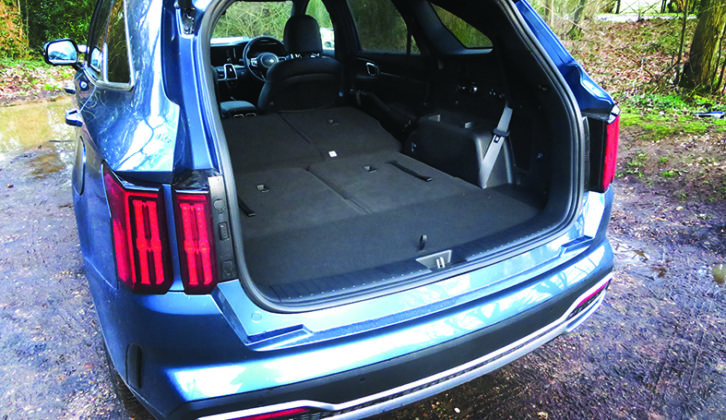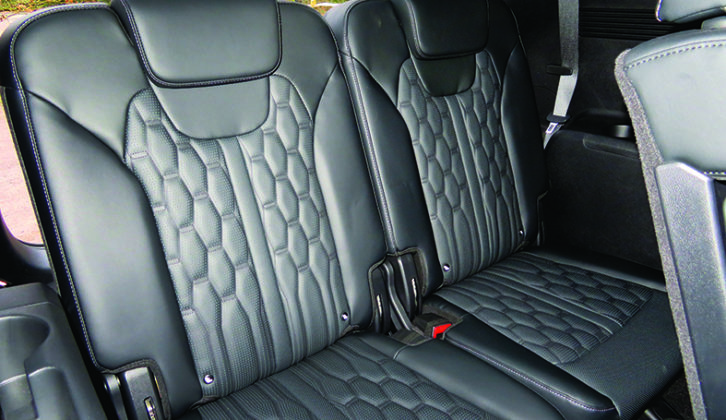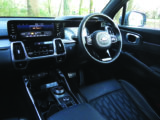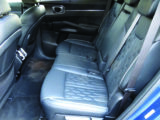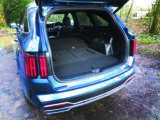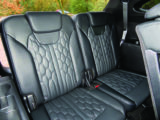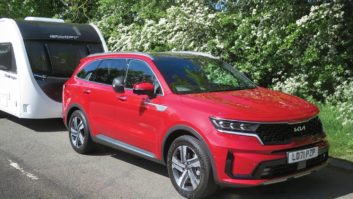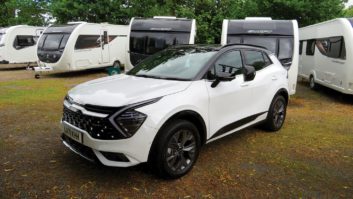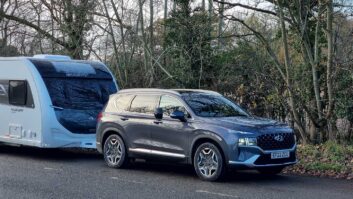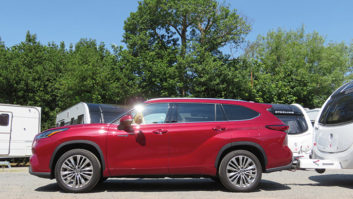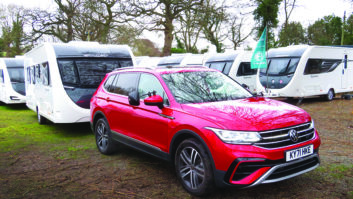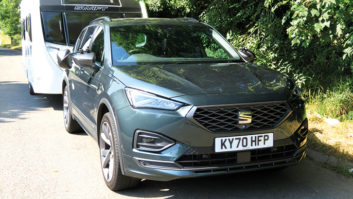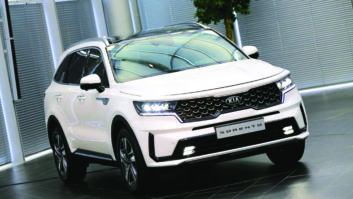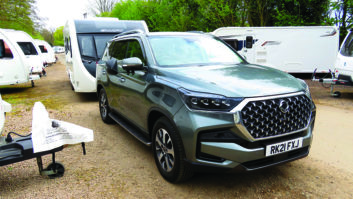The latest Kia Sorento resembles the outgoing model but it’s otherwise a new car that marks perhaps the most radical evolution in its history.
Instead of a diesel-only range, buyers can opt for a full hybrid, with a plug-in hybrid also available. There is still a diesel, but it’s only available in mid-spec ‘3’ trim.
As well as more variety in the engine line-up, the Sorento is bigger and roomier than before, and there are new connectivity and driver assistance features.
We’re testing the top-spec regular hybrid, the 1.6 T-GDi HEV 4.
What are we looking for?
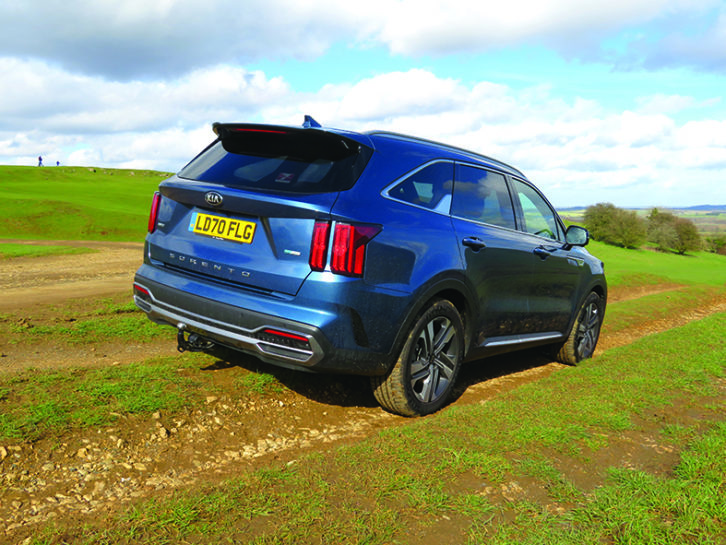
The Sorento has been a stalwart of the towing world for two decades. Can the new, high-tech, high-price Kia continue to appeal to its loyal caravanning owners?
Towing ability
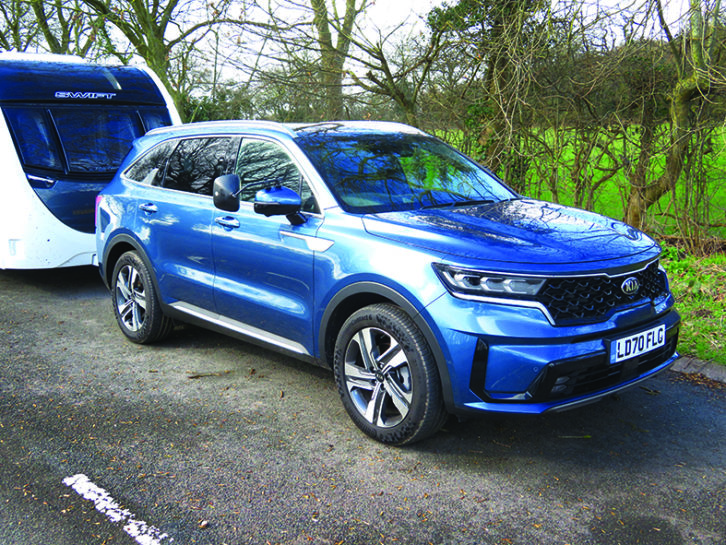
As a caravanner, you might now be asking: “Should I swap to a hybrid Sorento or stick with diesel?” Well, the hybrid is the heavier of the two, with a kerbweight of 2006kg rather than 1954kg. Both have a maximum noseweight of 100kg.
Every other key towing stat is in the diesel’s favour. Its towing limit is 2500kg rather than 1650kg, and the diesel has 325lb ft of torque rather than 258lb ft.
But despite being outmuscled by the diesel, the Sorento hybrid can comfortably pull a mid-sized caravan up to speed.
We matched the Kia to a Swift Fairway Platinum 560 with a MiRO of 1464kg. Accelerating up to 60mph, we could hear the engine working harder than in solo driving, but the noise wasn’t intrusive.
On motorway gradients and in headwinds, the Sorento held 60mph without difficulty, although the automatic gearbox did have a tendency to hunt around for the right ratio.
We wished for a bit more performance when pulling away from junctions, although this had more to do with the gearbox than any shortage of pulling power.
In the default ‘Eco’ mode, there was a slight hesitancy when pulling away. Switching to ‘Sport’ made the car more eager from a standing start.
It was a similar story when driving off on a slope. In ‘Eco’, the Sorento moved away steadily, but with four-wheel drive, traction on damp Tarmac wasn’t an issue.
The Kia felt controlled and confident on country roads. Taut suspension allowed very little float over dips and crests, and direct steering helped the driver place car and caravan accurately.
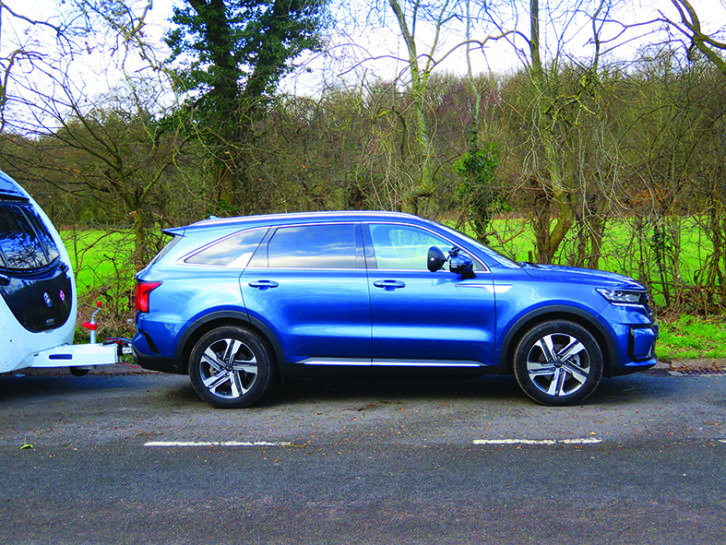
It was only when we turned onto a motorway that we fully appreciated just how well the new Sorento tows. Winds were high enough for us to have considered postponing the test, but the big Kia took conditions in its stride.
The car hardly moved at all, unless on a really exposed stretch of road. Even passing HGVs made little difference to its composure. We kept preparing for steering corrections we never needed to make. Having towed with every generation of Sorento, we’d say the new car’s stability exceeds the high standard set by the old model.
Manoeuvring slowly and smoothly is straightforward, helped by having a reversing camera as well as a 360° plank-view camera system.
The lowball and electrics sit well clear of the bumper, so hitching up is achieved without skimmed knuckles or frayed tempers. The retractable lowball motors into place and back again at the push of a button. So it should, when you’re paying £1495 for the ball and electrics.
A space-saver spare is standard, which is preferable to a can of get-you-home gunk.
All told, we’re thoroughly impressed by the Sorento. Were it not for the hesitancy when pulling away and the modest towing limit, it might have scored five stars here.
Solo driving
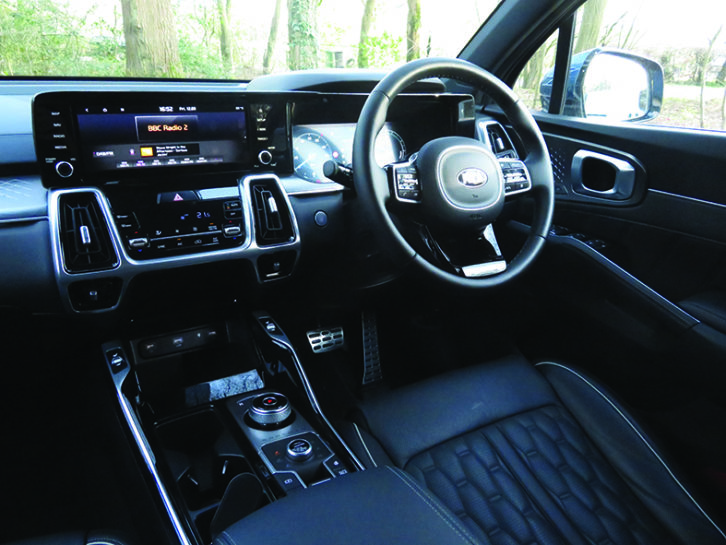
It might seem an odd comment to make about a big 4×4, but the Sorento hybrid really suits town driving. The car can travel on electric power alone at times, and even when petrol engine and electric motor combine, there’s very little noise.
As when towing, the automatic gearbox is sometimes slow to respond, but the Sorento accelerates briskly enough once the ‘box has stopped dithering. Although the engine note is quite bland, the subdued sound stays in the background unless you press your right foot to the floor.
Head out of town onto A- and B-roads and the Sorento handles well for such a big, heavy car. It’s not as humble as a BMW X3 or Jaguar F-Pace, but there’s no unruly body lean when cornering at speed.
For the most part, the Sorento matches comfort to control. But the ride is more fidgety on the 19-inch alloys of ‘4’ spec cars than the 17-inch wheels on entry-level models. Large potholes are felt with a thump.
On the motorway, the ride smooths out and wind and road noise are kept to modest levels, making the Sorento a relaxing car on long journeys.
Space and practicality
Generous space and intelligent design combine to make the new Sorento one of the most practical SUVs we’ve tested. The look and feel of the cabin have improved, too, taking the Kia towards the territory occupied by premium brands such as Audi and Mercedes.
The driver enjoys the lofty driving position you’d expect of a big SUV, and the seat adjusts electrically every which way. We found it a comfortable place to spend a long day.
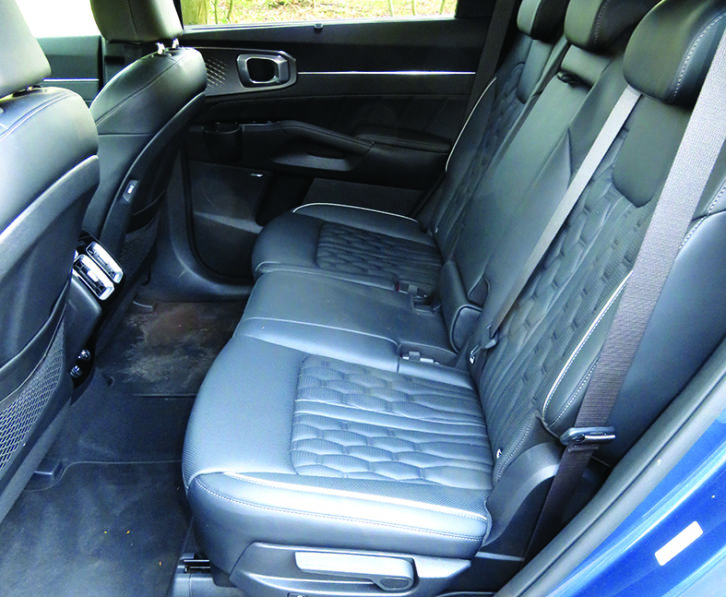
There are some innovative touches, like the under-mirror cameras that show what’s in your blind spot when you indicate. And thankfully, Kia has swum against the tide by not including the air-con controls in a touchscreen menu – there are separate controls beneath the screen.
Talking of air-con, there are vents for all three rows, so you won’t need the fan on full blast for chilled air to reach the third row on a warm day.
There’s lots of space in the middle of the car, with enough legroom for passengers over 6ft tall to sit comfortably behind an equally lanky driver.
The width of the cabin, and the smallest of humps for the transmission tunnel, means the middle row is nearly as comfy for three as for two.
Another thoughtful touch is the number of USBs. It’s not just the driver and front seat passenger who can charge their phones on the go. For those in the middle of the car, there’s a 12V socket and a USB between the front seats, and more USBs in the sides of the front seats.
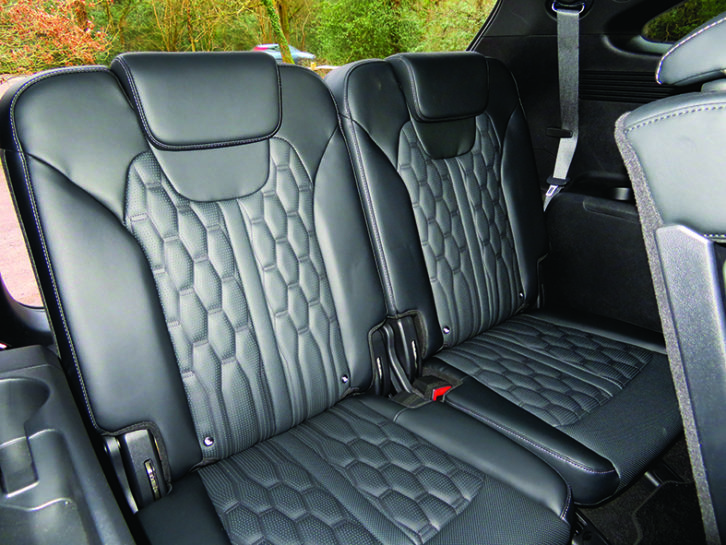
Access to the third row is refreshingly easy, because the middle seats tilt and slide well out of the way. Space is rather tight with the middle row set fully back, but it can move forwards for more knee room for those in seats six and seven.
There’s so much legroom in the middle to start with, so it’s no hardship to give those in the back a few more centimetres.
With all seven seats upright, there’s room for a few bags of shopping. Lower the third row into the floor and the boot is huge. Although the diesel has a few more litres of capacity, we can’t see many hybrid owners complaining.
Buying and owning
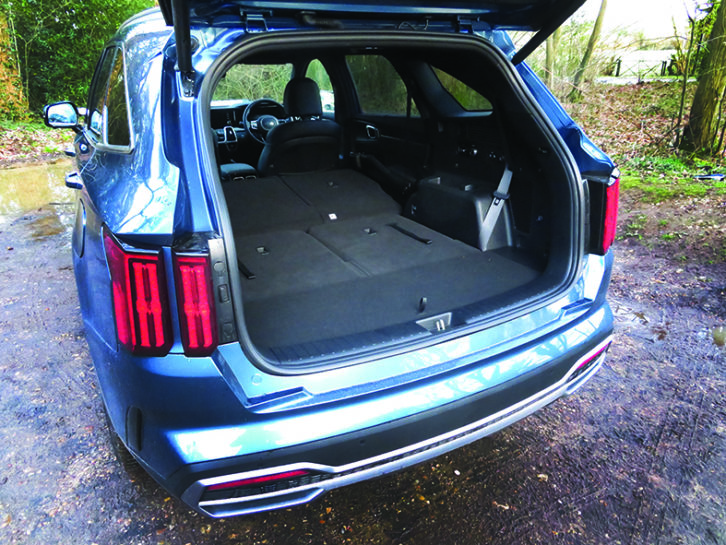
Kia has continued in its push upmarket with the new Sorento. Prices start from £38,845, and our high-spec test car has a list price of £46,945.
That means the Kia will need to win over customers with the budget to choose an SUV from among the prestige brands.
However, few rivals of similar price are as well equipped as the Sorento 4, with its leather upholstery, 12-speaker stereo, customisable head-up display, heated and ventilated front seats, and more.
Some of the Sorento’s competitors are going to be cheaper to fuel, though – we saw between 36 and 40mpg in solo driving, and 22.1mpg while towing.
The Kia has a long list of safety equipment and driver aids as standard, and earned a five-star rating from Euro NCAP’s crash-testers.
Verdict
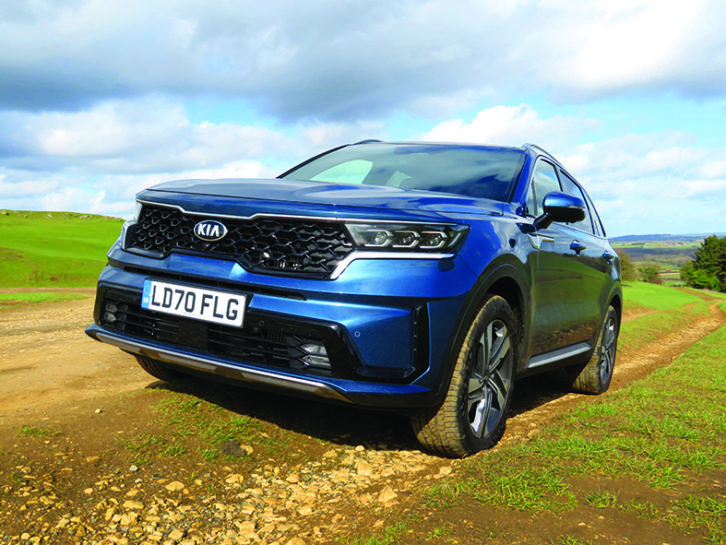
We tend to mark a car down if it can’t legally tow a tourer weighting 85% of its kerbweight, and that applies here. With its 1650kg towing limit, the Sorento hybrid can still handle most caravans, but it can’t tow some of the big, twin-axle luxury vans that the diesel model could tow. It’s this towing limit, and the transmission’s hesitancy in’Eco’ mode, that denies the new Sorento a five-star rating.
Otherwise, we’re smitten. It’s been said before, but stability is the quality we value above all others in a tow car. On a day when the wind was so strong that we considered delaying our test, the Sorento mastered the conditions superbly. In the past, we’ve always found a difference in stability between the best luxury SUVs (think BMW X7 and Land Rover Discovery) and big mid-market 4x4s from the likes of Hyundai and Kia. It’s difficult to be sure without a back-to-back test, but the new Sorento seems to have closed that gap.
What’s more, it’s a brilliantly practical family car. Not only is it spacious, but Kia’s designers have thought carefully about how modern families actually travel. With so many chargers, there’ll be no squabbling over who gets to plug in their tablet. And thanks to plentiful air vents, there’s no danger that some passengers are too hot while others are too cold.
The new Sorento from Kia is highly recommended – there’s a reason it made it onto our best tow car list. But for the caravanning customer, we can’t help thinking that the diesel version should be even better.
| How much will it cost on finance?
You can put a Sorento 4 on your drive for £600.60 per month,. That’s a Personal Contract Purchase deal from Kia over 37 months with a 4.8% APR, assuming 10,000 miles per year. There’s a £1500 deposit contribution from Kia, and a customer deposit of £4694.50. To own the car at the end of the agreement, you’ll need to make a final payment of £23,930.50. |
IF YOU LIKED THIS… READ THESE:
Seat Ateca 2.0 TDi 150PS-4Drive Experience Lux DSG
Ford Kuga 2.5 Duratec PHEV ST0Line X
Green towing: hybrid vs diesel
If you’ve enjoyed reading this article, why not get the latest news, reviews and features delivered direct to your door or inbox every month. Take advantage of our brilliant Practical Caravan magazine SUBSCRIBERS’ OFFER and SIGN UP TO OUR NEWSLETTER for regular weekly updates on all things caravan related.
It was only when we turned onto a motorway that we fully appreciated just how well the new Sorento tows
Technical Specifications
| Engine Size | 1598 cc |
| Kerbweight | 2006 kg |
| Towball Limit | 100 kg |
| Maximum Towing Limit | 1650 kg |
| Power | 226 bhp |
| Torque | 258 lb ft |
| Offical MPG | 38.2 mpg |
| Towing MPG | 22.1 mpg |
| CO₂ | 168 g/km |
